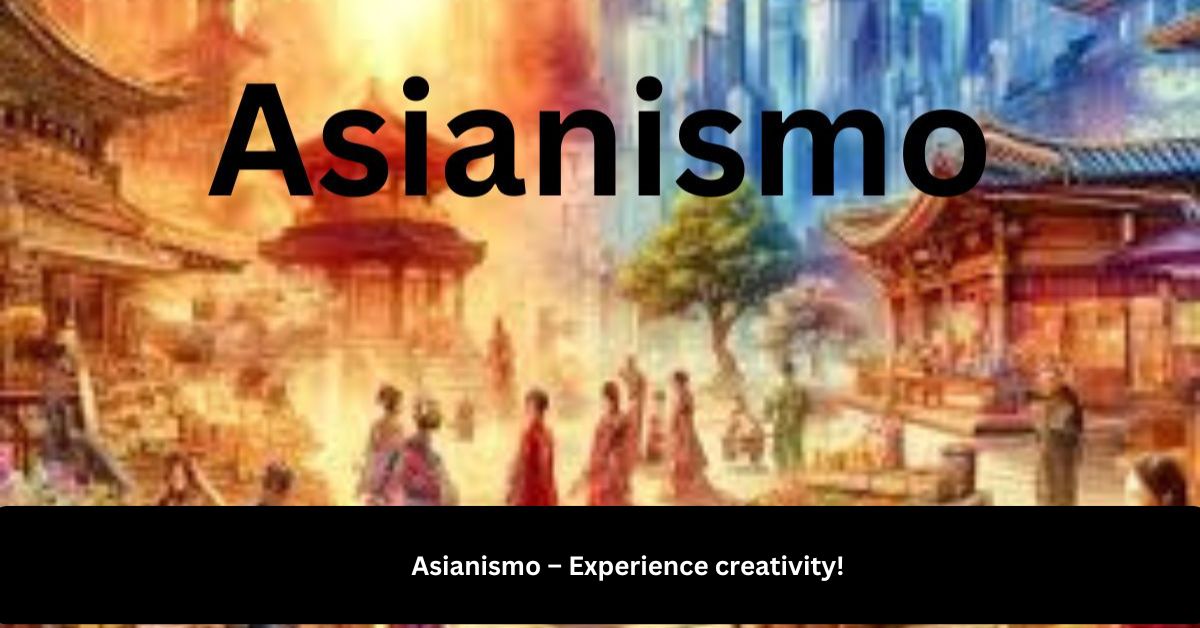Asianismo transformed my artistic journey, blending my fascination with traditional Asian aesthetics like Japanese calligraphy with modern techniques, allowing me to create deeply meaningful artworks.
Asianismo is a cultural movement blending traditional Asian art and philosophy with contemporary global aesthetics. It celebrates Asia’s rich heritage through innovative art, fashion, and design, influencing global cultural trends and fostering cross-cultural dialogue.
Let’s explore Asianismo with us and delve into its fusion of traditional Asian art and contemporary global influences.
What is Asianismo – Explore the cultural fusion!
Asianismo is a modern cultural movement that brings together traditional Asian art and philosophy with contemporary global trends. It started in the early 20th century as a response to the dominance of Western culture in art and fashion.
Asianismo aims to celebrate and reinterpret Asia’s diverse cultural heritage, blending ancient traditions with new ideas to create something fresh and innovative.
At its core, Asianismo values creativity, diversity, and cultural exchange. Artists and designers inspired by Asianismo often use traditional Asian artistic techniques, like Japanese calligraphy or Indian textile patterns, in their work.
This movement isn’t just about aesthetics—it’s also about bridging different cultures and promoting understanding across borders.
When did Asianismo start – Trace the roots!
Asianismo began to take shape in the early 20th century as a response to the overwhelming influence of Western culture on the global stage. During this time, many Asian artists and thinkers felt a need to reclaim and celebrate their own cultural identities amidst rapid modernization and globalization.
The early pioneers of Asianismo, such as artists like Yayoi Kusama and designers like Issey Miyake, played crucial roles in shaping its foundations. Their innovative approaches to art and fashion drew inspiration from ancient Asian philosophies like Zen Buddhism and Taoism, emphasizing simplicity, harmony, and the beauty of imperfection.
Why is Asianismo significant – Guide Step By Step!
1. Cultural Celebration:
It celebrates and revitalizes Asia’s rich cultural heritage, showcasing traditional art forms, philosophies, and craftsmanship that might otherwise fade into obscurity in the face of modernization.
2. Innovation and Fusion:
Asianismo blends traditional Asian artistic techniques with contemporary global aesthetics, fostering creativity and innovation in art, fashion, and design.
3. Global Influence:
It has a profound impact on global culture by promoting cross-cultural dialogue, diversity, and inclusivity, bridging gaps between East and West through artistic expression.
4. Philosophical Depth:
Drawing from philosophies like Zen Buddhism and Taoism, Asianismo promotes values such as mindfulness, harmony with nature, and respect for tradition, offering deeper insights into Asian cultural perspectives.
5. Artistic Inspiration:
Artists and designers inspired by Asianismo create works that challenge conventional norms, pushing boundaries and influencing new artistic movements and trends worldwide.
How does Asianismo impact global culture – Dive into!
Asianismo has a significant impact on global culture by enriching it with diverse perspectives and artistic innovations rooted in Asian traditions. Through its blend of traditional Asian art forms and contemporary global aesthetics, Asianismo fosters cross-cultural understanding and appreciation.
Furthermore, Asianismo promotes cultural diversity and inclusivity on a global scale. By showcasing the beauty and depth of Asian cultural heritage, the movement encourages dialogue and exchange between different cultures. This not only enhances cultural appreciation but also challenges stereotypes and broadens perspectives.
Who are key figures in Asianismo – Detail Answer Here!
Key figures in the Asianismo movement include influential artists and designers who have shaped its trajectory and global influence.
One prominent figure is Yayoi Kusama, known for her avant-garde art characterized by bold colors and repetitive patterns. Kusama’s work often reflects themes of infinity and the interconnectedness of the universe, drawing inspiration from her Japanese heritage and personal experiences.
Another key figure is Issey Miyake, a pioneering fashion designer renowned for blending traditional Japanese craftsmanship with cutting-edge technology. Miyake’s innovative approach to fashion has redefined industry standards, emphasizing sustainability and timeless elegance.
Where can I see examples of Asianismo in art and fashion – You Need To Know!
Examples of Asianismo in art and fashion can be found in galleries, museums, and fashion shows worldwide, showcasing the movement’s fusion of traditional Asian influences with modern aesthetics.
In art, exhibitions featuring works by artists like Yayoi Kusama often highlight Asianismo’s vibrant colors, geometric patterns, and thematic explorations of identity and infinity.
In the realm of fashion, Asianismo influences can be seen on runways and in designer collections that blend traditional Asian garments with modern twists. Designers like Issey Miyake incorporate Japanese textile techniques and minimalist aesthetics into their creations, promoting sustainability and cultural heritage.
What are the main philosophical roots of Asianismo – Click Here To Learn more!
Asianismo draws its main philosophical roots from several ancient Asian traditions that emphasize harmony, mindfulness, and respect for cultural heritage. One significant influence is Zen Buddhism, which promotes simplicity, meditation, and the appreciation of imperfections as integral parts of beauty.
Taoism also plays a pivotal role in Asianismo, emphasizing harmony with nature, spontaneity, and the natural flow of life. Artists and designers inspired by Taoist principles often incorporate organic forms, natural materials, and fluid designs into their work, aiming to capture the essence of balance and interconnectedness found in nature.
How can I learn more about Asianismo – Read Now!
To learn more about Asianismo, there are several avenues you can explore. One approach is to visit exhibitions and galleries that feature Asianismo-inspired artworks and fashion pieces.
These showcases often provide insights into how artists and designers reinterpret traditional Asian aesthetics in innovative ways, blending them with contemporary influences to create striking visual experiences.
Another way to delve deeper into Asianismo is to engage with online resources and communities dedicated to the movement. Websites, blogs, and social media platforms often feature articles, discussions, and updates about Asianismo’s impact on art, fashion, literature, and beyond.
FAQ’s:
1. What are some examples of Asianismo in literature and media?
Asianismo themes can be found in literature through works that draw on Asian philosophies, folklore, and cultural narratives. Authors like Haruki Murakami blend elements of Japanese culture with contemporary storytelling techniques, offering unique perspectives on modern life and existential themes.
2. What fashion trends are influenced by Asianismo?
Fashion trends inspired by Asianismo often emphasize quality craftsmanship, sustainability, and a blend of traditional Asian garments with modern designs. Styles like minimalist chic and eclectic fusion draw on Asian aesthetics to create distinctive looks that resonate with global fashion trends.
3. How does Asianismo contribute to sustainability in art and fashion?
Asianismo promotes sustainable practices by highlighting traditional Asian craftsmanship, which often uses natural materials and techniques that minimize environmental impact. Designers incorporate these practices into their work, creating eco-friendly fashion and art that celebrate cultural heritage while advocating for ethical production.
Conclusion:
Asianismo stands as a vibrant cultural movement that merges traditional Asian art and philosophy with contemporary global sensibilities. By celebrating Asia’s rich cultural heritage and fostering creativity and innovation, Asianismo has made a profound impact on art, fashion, literature, and media worldwide.



